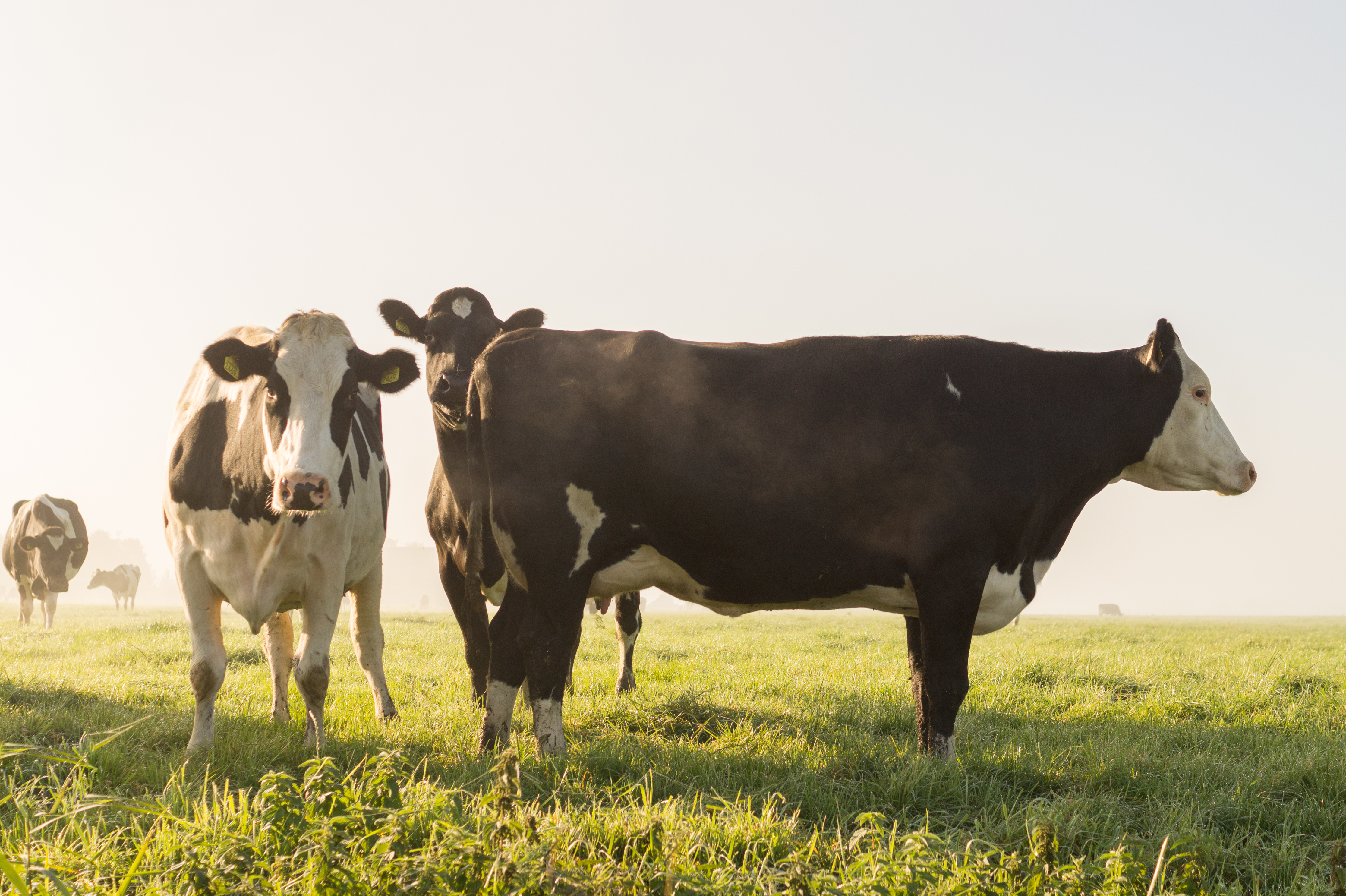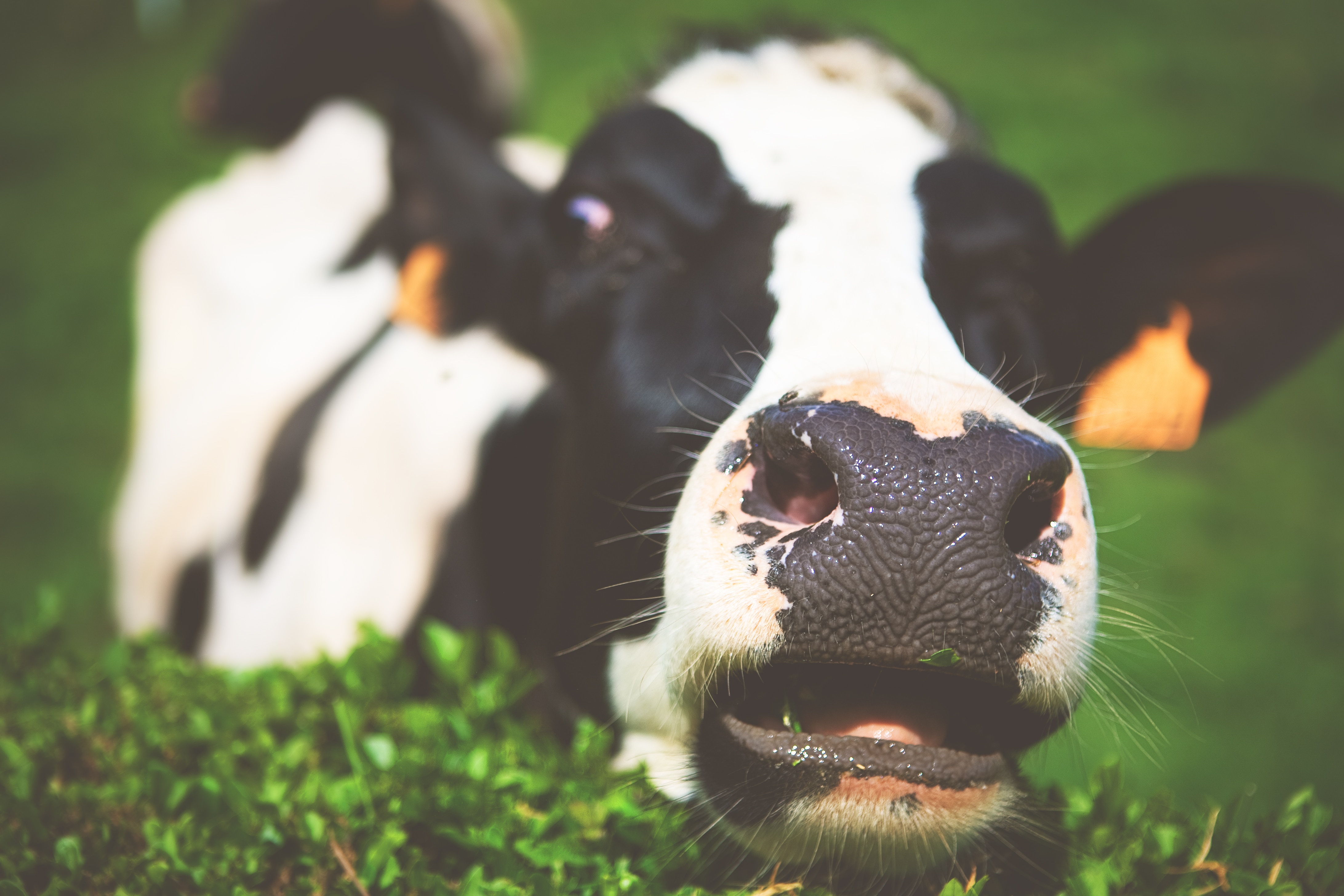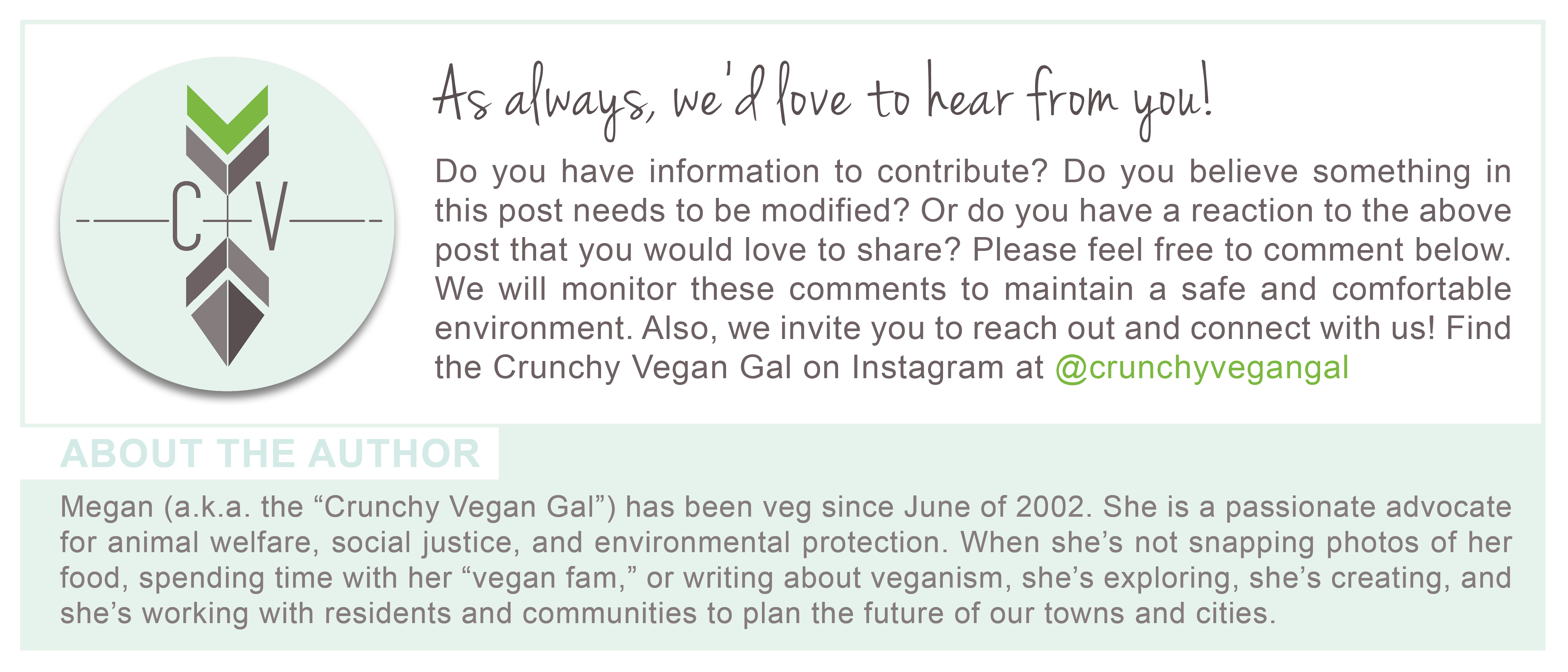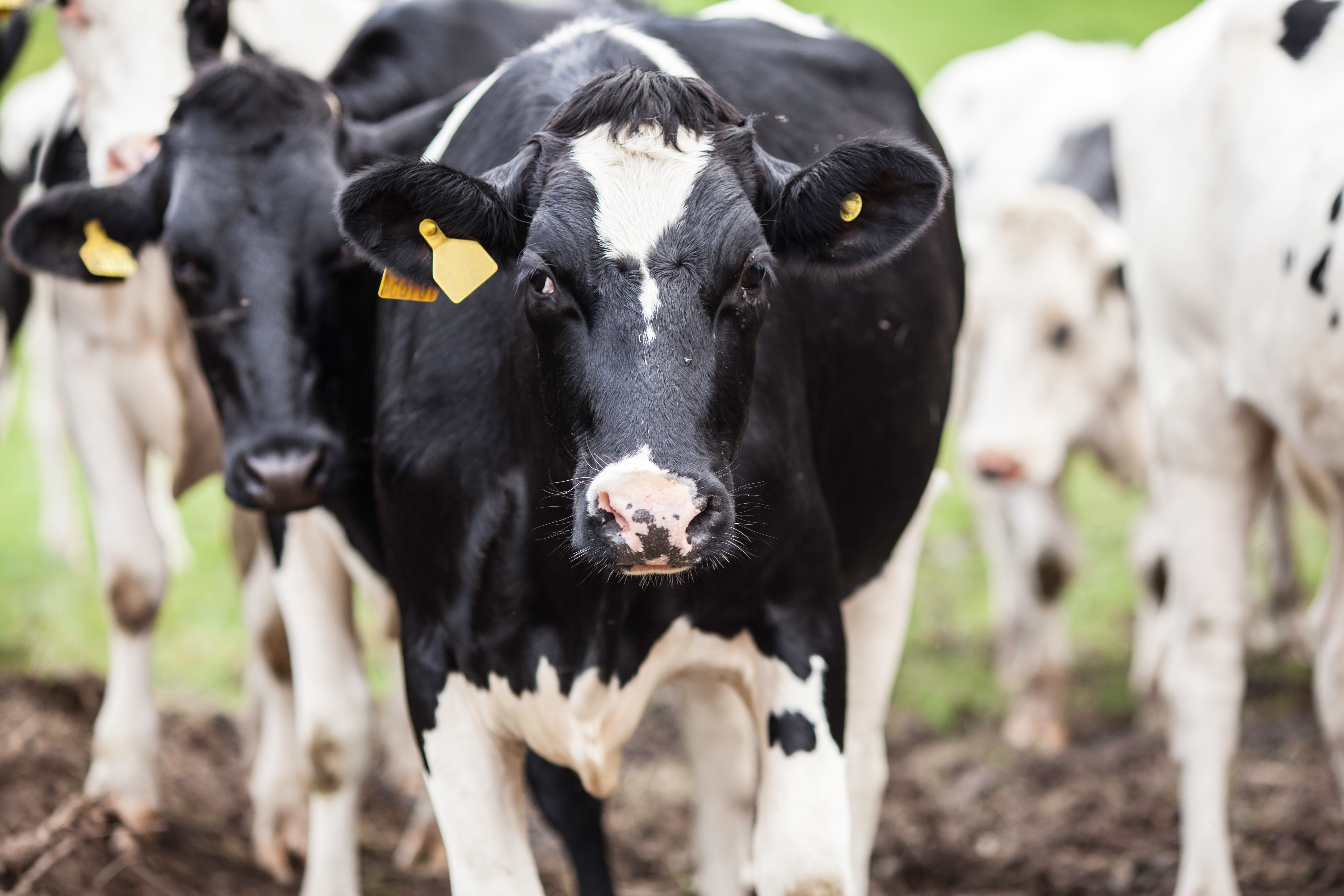One study is reported to make the case for improving welfare of dairy cows. Here’s why we’re not on board.
We’re all in support animal welfare—100% on board—but we believe that anything which reduces or eliminates the guilt of consuming animal products will do nothing to promote long-term animal welfare. Which is why we’re frustrated to find a study being touted as a boon for advocating the happiness of cows.
This time last year, a scholarly article was published in the Journal of Endocrinology. A year later, and the news outlets seem to be picking the story back up.
The article, entitled Elevation of circulating serotonin improves calcium dynamics in the peripartum dairy cow, elaborates how increased serotonin, the biochemical attributed to feelings of happiness, improves milk production in cows. In short, happier cows produce more milk.
On the surface, this might seem like a positive realization. If cows must be exploited for their milk, we ought to fight for their good treatment, right? However, as we look deeper, we understand that this study and the articles praising its findings are not only misleading, but they’re biased and have nothing to do with promoting animal welfare.

Misrepresenting the Study
While the headlines make it sound like a positive thing (how could anyone be mad about improving living conditions for cows!?), the articles misrepresent the study.
First off, while many of the articles talk about “happy cows,” that’s nary a phrase that’s actually presented in the text of those articles (Tjhalbach, 2017). The focus of the articles instead emphasize the results (i.e., more milk), rather than the conditions which make cows happy.
Another misleading element of the reporting is related to nutrition. Some articles mention increased calcium levels as a benefit of dairy cow happiness (Houston, 2016; Johnson, 2016; et al.). The study actually focuses on calcium levels in the cows’ blood , and doesn’t touch upon the levels of calcium as a nutritional value for human consumption. Yet news outlets are interestingly touting the benefit for human consumers. This does nothing but perpetuate the calcium myth. While the articles praise the study’s findings for the nutritional benefit of increased calcium in milk, it’s actually been proven that diets high in dairy products are attributed to increased health risks, rather than health benefits (Barnard, 2016; Greger, 2015).
Lastly, articles paint pictures of conditions which couldn’t be farther from the reality for dairy cows. For example, Nigel Cook, director of the Dairyland Initiative at the University of Wisconsin-Madison’s School of Veterinary Medicine, explains, “I think it’s really important that we give them the spa treatment” (Antlfinger, 2017). Give them the “spa treatment,” huh? As if they’re getting their hooves painted and their hair trimmed?
In a similar comparison, a dairy farmer was quoted as suggesting the treatment of cows is like “a good back massage.”
“Cause [sic] cows like to rub and get the hair off of their back, and I mean who doesn’t love a good back massage when you can get one?”
-James Juedes, owner of Pleasant View Dairy
In fact, improving the living conditions for dairy cows is just a peripheral consideration to the study. The large takeaway is really that farmers can boost the profitability of their business. So, while some articles touch upon living conditions (Antlfinger, 2017) or nutritional value (Houston, 2016; Johnson, 2016; et al.), that’s really not the basis of the study, as we’ll explain shortly.

Hardly Neutral
As for the study itself, it’s simply biased. A lot of the hype is originating from the University of Wisconsin-Madison (WISC), where the lead researcher is an Assistant Professor. The lead, Dr. Laura Hernandez, is an Assistant Professor of Lactation Biology at the WISC Department of Dairy Science. We visited Dr. Hernandez’s profile at the WISC website:
“The goal of Dr. Hernandez’s research is to elucidate novel methods for improving the ability of dairy cattle to maximize their lactation potential, either by improving the transition to lactation and/or alleviating dry period issues.”
The goal of her research isn’t the health or welfare of cows, it’s maximizing their milk production.
Despite the journal article’s “declaration of interest,” which claims there is no conflict of interest among the authors, it’s difficult to produce neutral research in a profit-driven industry (which is already rooted in exploitation) when it’s coming from within the industry (Hernandez et al., 2016). While Dr. Hernandez represents WISC’s Department of Dairy Science, the study is a collaboration of authors from across university departments and other universities, including the Department of Animal Sciences at WISC and the Veterinary Physiology Department at University of Bern, Switzerland.
Funding was provided by a USDA-HATCH Formula Fund grant, as well as funding provided by the Wisconsin Consortium for Extension and Research in Agriculture and Natural Resources (CERANR) and Graduate School funding provided by the University of Wisconsin-Madison. From a limited review, there doesn’t appear to be a direct connection to Big Ag. However, WISC, specifically, has encouraged industry support for research in the past.
In 2013, for example, John Lucey [1], then Director of the Wisconsin Center for Dairy Research at WISC, published this perspective in a periodical called “Cheese Market News”:
“Now is the perfect time for the U.S. dairy industry, farmers, government agencies and universities to work together to develop a long-term funding program for dairy product research that will sustain the United States as a leader in the manufacture and export of dairy products.”
Doing Nothing to Improve the Lives of Dairy Cows
The most significant flaw with the study are claims that this research will help ensure dairy cows are happy. The reality is that the interest of the cows is not at heart of the research.
To be clear, while news outlets like to talk about the “spa treatments” which cows will be getting as a result of the findings, the study never looked at the treatment or physical living conditions of dairy cows. Rather, the study evaluated the effectiveness of daily injections of seratonin synthesis, 5hydroxy-L-tryptophan (5-HTP) (Hernandez et al., 2016). The study concludes:
“We can state confidently, however, that 5-HTP warrants further investigation as a preventative strategy for the prevention of subclinical and clinical hypocalcemia in dairy cows.”
Where’s the happiness in that? It says absolutely nothing about improving conditions for cows. Instead, dairy cows were subjected to experimentation in order to produce findings which actually aren’t anything about the treatment of cows beyond regular injections of a synthetic neurotransmitter.
Furthermore, as the study disregards improved treatment, it emphasizes profitability goals. To start, the research is being promoted through a University of Wisconsin program called the Dairyland Initiative. This is a farm-friendly educational partnership within the School of Veterinary Medicine at WISC, whose focus is on the animal, but for what appears to be largely for the benefit of the farmer (services include consultation for farmers). They’re offering workshops to farmers which claim to “improve life for cows,” but their services are, again, targeted at the farmer and their facilities (The Dairyland Initiative, n.d.; Ernst, 2017). In essence, this university-driven research is being used to advertise a university-led program where cows are seen as mere commodities for the benefit of farmers.
Additionally, the study itself explains that “happier cows eat less, and that can save farmers big on feed costs and vet bills” (Bauer, 2017). As it suggests, the primary value of this study is increased revenues an reduced costs for farmers. The significant findings seem simply to be that injecting cows with synthetic seratonin will reduce the need to care for and feed dairy cows which in turn produce more milk for increased sales and profits. There are no happy cows in that equation.
Conclusion
Excuse me if I’m skeptical of news coming out Dairy programs at a university in the “Dairy State,” but I see no evidence for claims that dairy cows will be happier now that this research has been published. Instead, dairy cows are being drugged to feel a sense of well-being so that their bodies can function effectively as productive milk machines.
On the surface, there doesn’t appear to be a direct tie to Big Ag through funding or engaged research participants, but I suspect this could warrant additional research. Nevertheless, an industry-driven research effort (regardless of whether it’s university-funded or corporate-funded), can hardly be claimed as “neutral.”
Furthermore, we ought to be more critical of the actual ramifications of this research. The lives of dairy cows aren’t being improved. Dairy cows will continue to be exploited as researchers find workarounds for providing good treatment. Let’s think about what these farmers really mean when they say they’ll be giving their cows the “spa treatment.” If being exploited for ones secretions is just a girls’ day at the spa, remind me to never visit a spa.

Notes
- Lucey has since transition to a new role as a Professor in the Department of Food Science at WISC. https://foodsci.wisc.edu/faculty/lucey/
Resources
n.a. (n.d.). The Dairyland Initiative. University of Wisconsin-Madison School of Veterinary Medicine. Retrieved from https://thedairylandinitiative.vetmed.wisc.edu/services/on-farm-consultation/
Antlfinger, C. (July 11, 2017). Researchers say udderly happy cows can provide more milk. Post Gazette. Retrieved from http://www.post-gazette.com/news/science/2017/07/12/Researchers-say-udderly-happy-cows-can-provide-more-milk/stories/201707120114.
Barnard, N. (February 11, 2016). White lies? Five milk myths debunked. Physicians Committee for Responsible Medicine. Retrieved from http://www.pcrm.org/nbBlog/white-lies-five-milk-myths-debunked
Bauer, K. (July 11, 2017). UW Study: Happy Cows Make More Milk. WAOW ABC Channel 9 News North Central Wisconsin. Retrieved from http://www.waow.com/story/35861800/2017/07/Tuesday/uw-study-happy-cows-make-more-milk.
Ernst, S. (July 11, 2017). Happy cow, better milk? The new program sweeping dairy farms. WNEM News Wisconsin. Retrieved from http://www.wnem.com/story/35861041/happy-cow-better-milk-the-new-program-sweeping-dairy-farms
Greger, Michael. (March 16, 2015). Is milk good for our bones? Nutrition Facts. Retrieved from https://nutritionfacts.org/video/is-milk-good-for-our-bones/
Hernandez, L. et al. (July 1, 2016). Elevation of circulating serotonin improves calcium dynamics in the peripartum dairy cow. Journal of Endocrinology, 230(1), pp. 105-123. Retrieved from http://joe.endocrinology-journals.org/content/230/1/105
Houston, G. (July 18, 2016). Happy cows really do make better milk. Food & Wine. Retrieved from http://www.foodandwine.com/blogs/happy-cows-make-more-nutritious-milk-study-says
Johnson, D. (July 19, 2016). Study claims happy cows produce more Nutritious milk. Science World Report. Retrieve from http://www.scienceworldreport.com/articles/43989/20160719/study-claims-happy-cows-produce-more-nutritious-milk.htm
Lucey, J. (2013). U.S. industry must collaborate to provide dairy research funding. Cheese Market News. Retrieved from https://www.cheesemarketnews.com/guestcolumn/2013/06sept13.html
Schultz, L. H. (2009). History of the Dairy Science Department at the University of Wisconsin-Madison: A Memoir. Madison, WI: University of Wisconsin. Retrieved from https://www.dropbox.com/s/ezrwx6wc1t0iaim/Dairy%20Science%20History%201870-2000.pdf
Tjhalbach. (July 15, 2016). Happy cows make more nutritious milk. Retrieved from the University of Wisconsin-Madison News.




